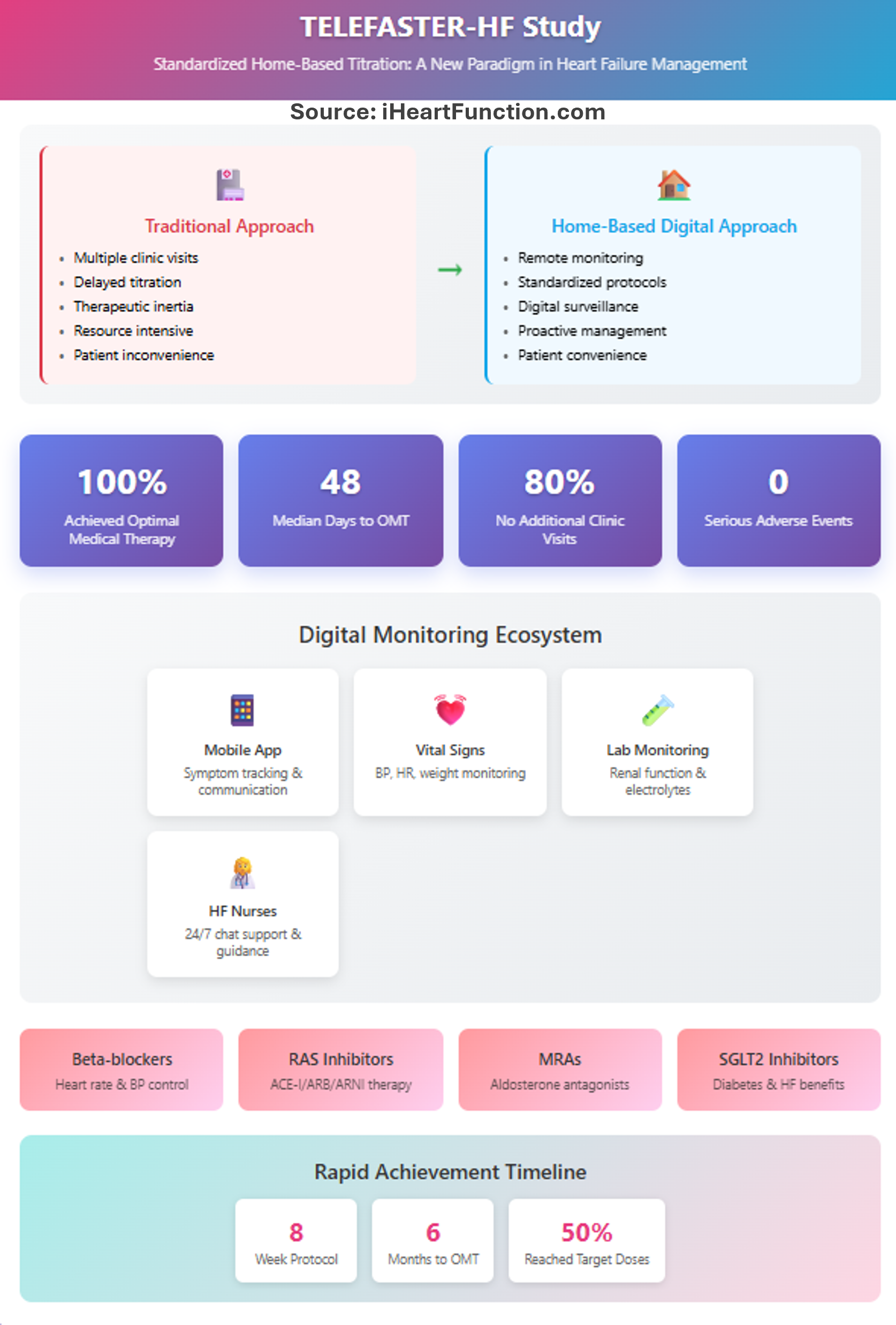Why this study – the rationale/objective?
The study by Louca et al. introduces an innovative and pragmatic approach to addressing a major clinical bottleneck in heart failure management: the delayed and incomplete titration of guideline-directed medical therapy (GDMT) in patients with heart failure with reduced ejection fraction (HFrEF).
While the clinical efficacy of quadruple GDMT regimens is well established in reducing mortality and hospitalization, real-world implementation often lags, largely due to logistical, safety, and adherence concerns. This study pioneers a novel model by combining a standardized eight-week up-titration protocol with home-based monitoring (HBM), minimizing the need for repeated clinic visits and circumventing therapeutic inertia.
How was it executed – the methodology?
In this open cohort study, 60 patients with newly diagnosed HFrEF underwent a structured titration regimen supported by digital tools for vital sign transmission, symptom questionnaires, and lab monitoring. Impressively, all participants achieved optimal medical therapy (OMT) within six months, and nearly half reached target doses of all four GDMT drug classes, including beta-blockers, RAS inhibitors, MRAs, and SGLT2 inhibitors. Notably, the median time to OMT was only 48 days, reflecting a pace rarely achieved in clinical trials or practice.
What is the main result?
Safety outcomes further reinforced the feasibility of this model. No serious adverse events occurred during titration. Common issues like bradycardia and hypotension were effectively detected and managed through routine digital surveillance and proactive communication via app-based chat with HF nurses. Furthermore, significant clinical improvements—including enhanced LVEF and reduced NT-proBNP levels—highlight the therapeutic impact of timely GDMT optimization.
Critical reading and the relevance for clinical practice
From a healthcare resource perspective, this approach demonstrates potential for reduced in-clinic assessments, as nearly 80% of patients required no additional cardiology visits during titration. This aligns with current goals of health systems worldwide to deliver efficient, scalable, and patient-centered chronic disease management.
However, several limitations should be acknowledged. The study population was relatively young (median age 62), digitally literate, and excluded patients with severe renal impairment, limiting generalizability. Furthermore, as a single-arm feasibility study, it lacks a comparator group, and the long-term sustainability of OMT adherence without continued monitoring remains to be validated.
Nonetheless, this study provides a compelling proof-of-concept that standardized titration algorithms combined with HBM can safely accelerate and optimize GDMT implementation. It aligns with emerging trends in digital cardiology, pointing toward a future where precision medicine is not only evidence-based but also operationally efficient.
In summary, Louca et al. offer a promising model for heart failure care, integrating technological innovation with guideline-based clinical rigor. Future randomized controlled trials are needed to confirm these findings across broader populations and to evaluate cost-effectiveness and long-term outcomes. Until then, TELEFASTER-HF serves as a beacon for how structured digital interventions may reshape chronic disease treatment paradigms.

Designed by Izabelle Uchmanovicz - Source iHeartFunction.com - Telefaster - HF Study - Standardized Home-Based Titration: A New Paradigm in Heart Failure Management




